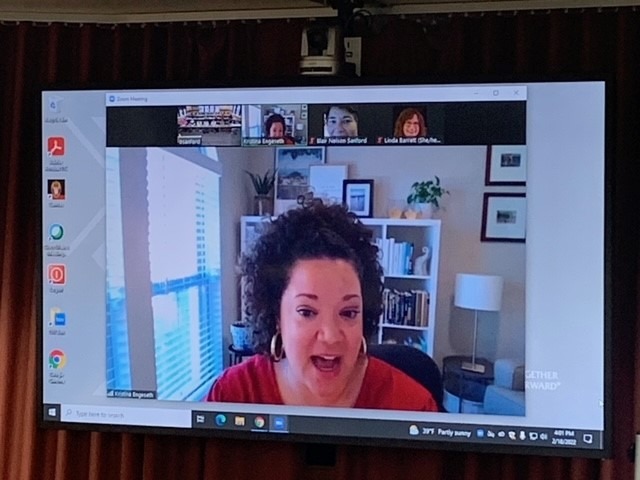The Wisconsin School of Business had the pleasure of hosting a DEI-focused applied learning with esteemed alumnae Kristina Engeseth. Since graduating from Wisconsin (SHR MBA ’13), she has worked with incredible companies such as Johnson & Johnson, Electronic Arts, Google, and Nike in various HR roles such as HR Business Partner, Inclusion & Diversity & Corporate Social Responsibility, and her current role as Head of People & Culture at Aligos Therapeutics. Our discussion ranged over a variety of topics: DEI & HR, Why DEI?, DEI Definitions, DEI Pillars, and a Group Case Study.

The first phase of our discussion was centered around DEI & HR. Kristina’s key message was that DEI should be at the center of all HR functional areas.
Next, we continued our conversation about what inspired her DEI career. After the death of George Floyd and others, Kristina was compelled by the national discussion of racial and social justice and was inspired to see diversity and inclusion as the new normal. She shared incredible statistics that rationalized why companies should move to become anti-racist because 80% of the world’s talent is made of women and people and color. She further expounded that although DEI results continue to lag, dismantling multi-faceted systems of oppression cannot be fixed in a short period of time.
From there, we explored various DEI definitions using an example posed by second-year MBA, Melissa Arenas. We analyzed a common experience faced by international students who tend to have names that are not easily pronounced by Americans. Kristina furthered the conversation by defining Diversity, Equity, and Inclusion in terms of this example.
- Diversity is who is in the room.
- Equity is recognizing the difference and redistributing the power or put differently, who is trying to get into the room and cannot. In this example, acknowledging the uniqueness of the person’s name and redistributing power by inquiring how to pronounce it.
- Inclusion is making the effort to ensure everyone belongs. For example, making an effort to learn the person’s name.
- And, the integration of Diversity, Equity, and Inclusion creates a belonging culture.
Kristina’s parting tips for us future DEI practitioners are to go where the energy is, capitalize on moments that matter, and don’t spin your wheels.
